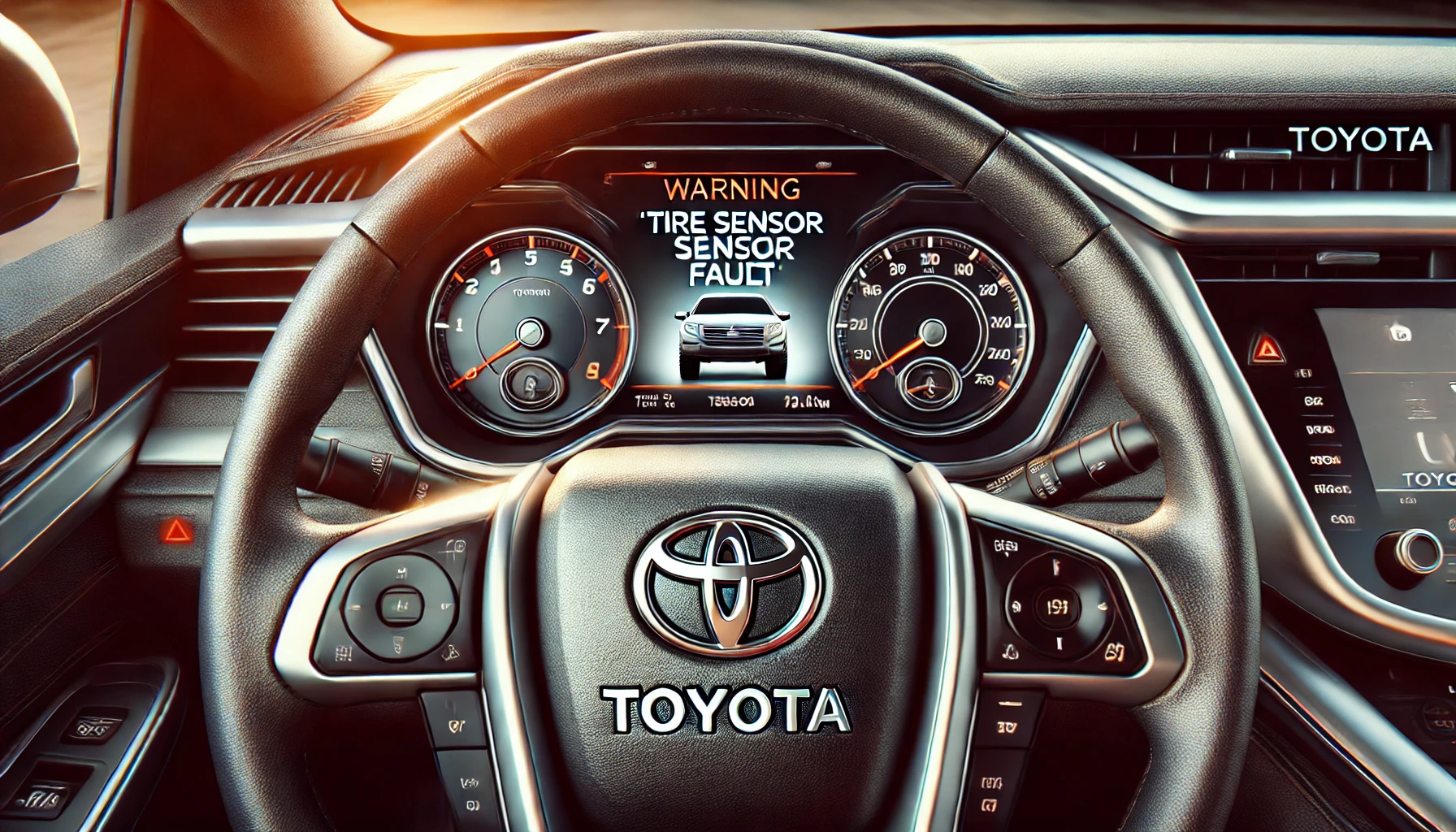
Toyota vehicles are known for their reliability and advanced technology, including the Tire Pressure Monitoring System (TPMS), which ensures that tires are properly inflated for optimal safety and performance. When a Tire Sensor Fault appears on your dashboard, it indicates an issue with the TPMS. Fortunately, fixing this problem is often straightforward. In this guide, we’ll explore the common causes of a tire sensor fault in Toyota vehicles and provide a step-by-step approach to resolving the issue.
Common Causes of Tire Sensor Fault in Toyota Vehicles
A Tire Sensor Fault in a Toyota vehicle can be triggered by several factors:
- Low Tire Pressure: The most common cause of a tire sensor fault is low tire pressure. The TPMS is designed to alert you when one or more tires are under-inflated, which can cause a fault warning.
- Damaged or Faulty Sensors: Each tire in your Toyota has a sensor that communicates tire pressure data. Over time, these sensors can get damaged due to wear and tear or during tire changes, which can cause them to malfunction.
- Weak Sensor Battery: The TPMS sensors in Toyota vehicles are powered by batteries that typically last 5 to 10 years. If a sensor’s battery is weak or dead, it will trigger a fault warning.
- Radio Frequency Interference: External electrical interference or a software glitch in the vehicle’s onboard system can sometimes cause the TPMS to malfunction.
- Recent Tire Service: If your Toyota’s tires were recently rotated, replaced, or serviced, the TPMS sensors may not have been recalibrated properly, which can lead to a tire sensor fault.
Steps to Fix Tire Sensor Fault in Toyota Vehicles
If your Toyota is displaying a Tire Sensor Fault warning, here’s how you can troubleshoot and fix the issue:
1. Check Tire Pressure Manually
The first step is to manually check the pressure in all four tires using a tire pressure gauge. You can find the recommended tire pressure for your Toyota vehicle in the owner’s manual or on a sticker located inside the driver’s door.
- Inflate any under-inflated tires to the correct pressure.
- After adjusting the tire pressure, drive your vehicle for a few miles to allow the system to recalibrate. In many cases, this will resolve the Tire Sensor Fault warning.
2. Reset the TPMS System
If adjusting the tire pressure doesn’t clear the fault, you may need to reset the TPMS system manually. The reset procedure may vary slightly depending on the Toyota model, but here’s a general guide:
- Turn the vehicle’s ignition to the On position without starting the engine.
- Locate the TPMS reset button, usually located under the dashboard near the steering wheel.
- Press and hold the reset button until the TPMS indicator light blinks several times, then release it.
- Drive the vehicle for about 10-15 minutes at a steady speed to allow the system to recalibrate.
If the reset is successful, the fault warning should disappear.
3. Inspect the Sensors for Damage
If resetting the TPMS doesn’t solve the problem, inspect the tire sensors for damage. The sensors are located inside the tire, attached to the valve stem. They can become damaged during tire changes or from driving on rough roads.
If you suspect sensor damage, it’s best to visit a Toyota dealership or a trusted mechanic to have the sensors inspected. Damaged sensors will need to be replaced to restore proper TPMS function.
4. Replace the Sensor Battery
The tire sensors in Toyota vehicles are powered by batteries, which typically last several years. If the sensor’s battery is dead, the sensor will stop functioning and trigger a fault. Unfortunately, the battery cannot be replaced separately, so the entire sensor will need to be replaced.
Visit a Toyota service center to have the faulty sensor replaced and recalibrated with the TPMS system.
5. Update the Vehicle’s Software
Occasionally, a Tire Sensor Fault can be caused by a software issue in the vehicle’s TPMS system. Toyota periodically releases software updates to improve performance and fix bugs. If none of the previous steps work, check with your local Toyota dealership to see if a software update is available for your vehicle.
Preventing Future Tire Sensor Faults
- Regular Tire Pressure Checks: Make it a habit to check your tire pressure at least once a month, especially during temperature changes. Properly inflated tires not only prevent sensor faults but also ensure better fuel efficiency and safety.
- Careful Tire Changes: When having your tires changed or rotated, ensure the technician handles the TPMS sensors carefully to avoid damaging them.
- Routine Maintenance: Include TPMS inspections during regular vehicle maintenance to ensure the sensors are functioning properly and their batteries are still working.
- Keep Software Updated: Stay up to date with your vehicle’s software to avoid glitches that could affect the TPMS system.
Conclusion
While a Tire Sensor Fault in a Toyota vehicle can be inconvenient, it is often a minor issue that can be resolved with basic troubleshooting. Start by checking the tire pressure, resetting the TPMS, and inspecting the sensors for damage. If the problem persists, visit a Toyota-certified service center to have the sensors replaced or the vehicle’s software updated. Regular maintenance and care of your tire sensors will help ensure your Toyota remains safe and reliable on the road.
